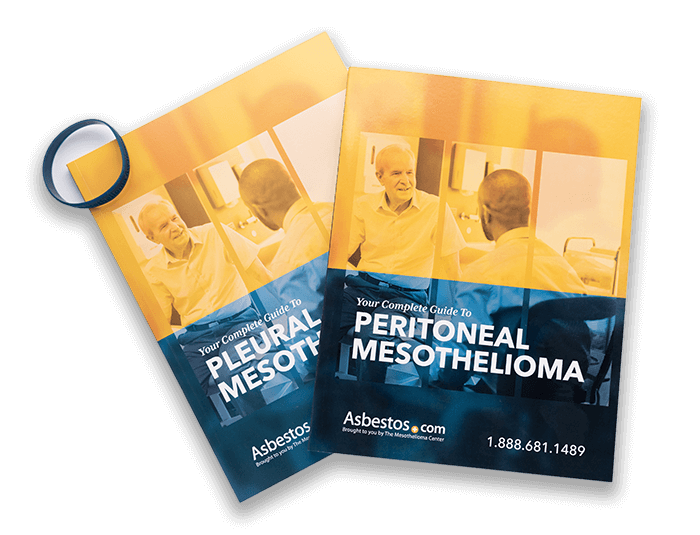Mesothelioma Stages
The four stages of mesothelioma describe how cancer progression affects lymph nodes and deep tissues. Early-stage patients have a better prognosis and more treatment options. The tumor node metastasis (TNM) system uses tumor size, location and the level of cancer spread to stage tumor progression.
Written by Karen Selby, RN | Medically Reviewed By Dr. Jacques Fontaine | Edited By Walter Pacheco | Last Update: November 15, 2024
What Does My Mesothelioma Stage Mean?
Your mesothelioma stage refers to how far tumors have spread through your body. Doctors classify mesothelioma into 4 stages depending on the location, size and number of your tumors.
If you’re diagnosed at an early stage, doctors may only find tumors in or close to the point of origin. Patients diagnosed at a later stage have tumors that have spread further in the body.
- Stage 1: Early tumor growth occurs along the mesothelial lining of one lung.
- Stage 2: Mesothelioma cancer cells have spread to nearby lymph nodes.
- Stage 3: Tumors have invaded deeper tissues in nearby organs and distant lymph nodes.
- Stage 4: Metastasis is present, and tumors have formed in distant parts of the body. Stage 4 is the most advanced stage and is terminal.
The stage of your mesothelioma at diagnosis can affect your treatment choices. Patients with stage 1 or 2 mesothelioma often consider aggressive multimodal treatment with surgery. Stage 3 patients may face tough choices about whether they want to pursue aggressive surgery.
Many patients diagnosed with stage 4 may decide to focus on palliative care to extend survival and ease symptoms of mesothelioma. However, people diagnosed in later stages have shared their remarkable mesothelioma survivor stories with us here at The Mesothelioma Center and have chosen to pursue aggressive treatment. Your treatment goals are deeply personal and should be discussed carefully with your doctor.
- The five-year survival rate for early-stage (stages 1 & 2) pleural mesothelioma is 24%. It significantly drops as the cancer progresses to advanced (stages 3 and 4).
- At stage 4, mesothelioma has extensively spread. The prognosis is often less than 12 months. Palliative care becomes the primary focus to improve the quality of life.
- Accurate staging is critical for treatment decisions. The stage of mesothelioma helps doctors choose the best treatment. Options include surgery, chemotherapy, or palliative care.
Pleural Mesothelioma Stages
The most common staging system for pleural mesothelioma includes 4 stages to describe the disease’s scope and progression. Doctors primarily use biopsy procedures and imaging tests, such as CT scans or X-rays, to stage malignant pleural mesothelioma.
Imaging scans show the size and location of tumors, while biopsies can detect cancer in lymph nodes. “The way we determine the stage is with a CT or PET scan,” Dr. Jacques Fontaine, director of the Mesothelioma Research and Treatment Center at the Moffitt Cancer Center, shared with The Mesothelioma Center.
Mesothelioma tumors may recur after initial treatment. Tumors appearing in different parts of the body can indicate you have progressed to a new stage of mesothelioma.
Mesothelioma stages directly impact prognosis. According to the Canadian Cancer Society, the average life expectancy ranges from 21 to 51 months after a stage 1 diagnosis to 8 to 12 months when diagnosed with stage 4 mesothelioma.
Stage 1 Mesothelioma
Identifying cancer is difficult at this early stage. Tumors are small and typically don’t cause pain or breathing difficulties. Patients with a known history of asbestos exposure may undergo screening before experiencing symptoms.
In stage 1 mesothelioma, cancer hasn’t spread past the outer lung lining. All treatment options are most effective at this mesothelioma stage. Pleural mesothelioma survivor Daniel McCarthy credits his early mesothelioma diagnosis with saving his life.
My wife is a nurse and noticed I was short of breath. She convinced me to see a doctor, and it basically saved my life.
Because McCarthy was diagnosed at an earlier stage, surgery was an option for him. Patients with early-stage mesothelioma often have a more favorable prognosis thanks to a broader range of treatment options.
Stage 2 Mesothelioma
Stage 2 mesothelioma is still more localized than in later stages, but may have spread to nearby lymph nodes. Tumors may begin to grow into the diaphragm and lung tissue.
Doctors diagnosed Cheryl Pilkington with stage 2 pleural mesothelioma in 2020. Before a scheduled knee replacement, she had received a routine chest X-ray that, at first, attracted little attention from medical staff. But her background in medicine led her to take a closer look a month later, especially after she developed shortness of breath. She noticed an abnormality in the X-ray, which she alerted her doctors about.
They never suspected [pleural mesothelioma]. A female who was not in any business where there was asbestos exposure. They were shocked when the biopsy came back, but only until they heard my history.
Pilkington had worked in her father’s foundry shop in her youth. She and her sister often played in the plaster dust. They were unaware the plaster dust also contained asbestos.
It’s generally rare for symptoms to appear in stage 2, so most diagnoses occur when seeking medical care for another condition. Doctors treat stage 2 mesothelioma with surgery, chemotherapy, immunotherapy and radiation therapy.
Stage 3 Mesothelioma
Stage 3 mesothelioma tumors spread deeper to nearby tissues, organs and lymph nodes. Most symptoms appear in stage 3. New symptom developments, such as difficulty breathing or chest pain, often lead to a diagnosis at this cancer stage.
When I was first diagnosed with stage 3 inoperable cancer and told I had a year to live, I figured I’d better hurry up and finish projects I was working on. But now my goal is to make it to the 10-year mark.
Doctors typically treat stage 3 mesothelioma with immunotherapy or chemotherapy. Some stage 3 patients are eligible for surgery. Palliative options can help control pain, improve quality of life and extend survival.
“If a doctor refers to peritoneal mesothelioma as stage 3, it usually means tumors have spread throughout the abdominal lining and to nearby lymph nodes,” Dr. Daniel Landau, medical director of Virtual Hematology at the Medical University of South Carolina, told The Mesothelioma Center.
Stage 4 Mesothelioma
Stage 4 mesothelioma is the most advanced stage. In late-stage mesothelioma, cancer spreads throughout the body cavity where it originated. It may also spread to the chest cavity or the abdominal cavity. In rare cases, mesothelioma can spread to distant parts of the body such as the liver, brain or bones.
Aggressive surgery for tumor removal is usually not beneficial at this mesothelioma stage. In our 2023 Mesothelioma Report: Latest Mesothelioma Survey, 37% of the Stage 4 patients we surveyed indicated they were using chemotherapy to treat their cancer.
Palliative care options include chemotherapy, Tumor Treating Fields, immunotherapy or radiation therapy. These can reduce symptoms, extend survival and improve quality of life. Clinical trials could offer experimental treatments.
Why Doctors Use the TNM Staging System
The TNM staging system is the most widely used system for pleural mesothelioma because it provides doctors with a simple yet detailed way to describe how extensive tumor spread is at the time of diagnosis. The abbreviation TNM stands for tumor, node and metastases. Doctors add a number after each letter to describe how far the cancer has advanced.
Tumor classifications range from Tx (no tumor) to T4 (multiple tumors throughout the pleura with additional characteristics). The N values describe cancer lymph node involvement, with values ranging from Nx to N3. Lymph node involvement signifies tumors may spread throughout the body. The M value indicates whether metastasis is present (M1) or not (M0).

Higher values on each indicator correspond to more advanced disease stages. The unique combinations of indicators determine which stage of mesothelioma you have. For example, T1 N0 M0 values indicate stage 1 while T(any) N(any) M1 signifies stage 4.
Earlier staging systems included the Butchart and Brigham systems. Dr. Eric Butchart devised the first mesothelioma staging system in 1976 and Dr. David Sugarbaker’s Brigham staging system followed in 1998. The latter focuses on surgery eligibility, but it’s limited in detail and not commonly used for pleural mesothelioma.

Receive a free guide with the latest information on emerging treatments and clinical trials.
Get Yours NowStaging Peritoneal, Pericardial and Testicular Mesothelioma
Oncologists use several staging systems for peritoneal, pericardial and testicular mesothelioma. There are no formal staging systems for pericardial or testicular mesothelioma. Oncologists often rely on modified versions of standard cancer indexes to describe tumor size and spread.
Some doctors use the Peritoneal Surface Oncology Group International’s modified TNM system to categorize peritoneal mesothelioma into 3 stages. This system aims to determine which patients are most likely to benefit from surgery. Others use the peritoneal cancer index.
- Modified TNM System: Doctors often use a modified version of the TNM system to assess and categorize testicular mesothelioma. This includes an added value “S” for levels of serum tumor markers.
- Peritoneal Cancer Index: The peritoneal cancer index is a tool doctors use to assess tumor cells. It can help doctors classify peritoneal mesothelioma by stage and determine appropriate treatments.
PCI scores range from 1 to 39, which directly correlate to prognosis. Patients with PCI scores higher than 30 had the lowest survival rates at 1, 2 and 5 years, while those with scores lower than 20 had the highest survival rates.
Why Is Mesothelioma Staging Done During Diagnosis?
Staging is an important part of diagnosing mesothelioma because understanding how much your cancer has progressed helps your doctor see the full picture of your overall health. Staging can serve as a compass, guiding mesothelioma specialists and patients through the complexities of treatment decisions.
Specialists who stage mesothelioma assist patients everywhere. They provide an exchange of data and research other doctors can follow.
Staging during diagnosis helps your provider treat all of your tumors and limit cancer spread to other parts of the body. The best treatment for a particular stage may involve surgery, chemotherapy, immunotherapy, radiation or a combination of these therapies.
How Do Mesothelioma Stages Affect Prognosis and Treatment Options?
Patients with early-stage mesothelioma have a better prognosis and prolonged survival compared to those in later stages. According to the American Cancer Society, 5-year survival rates for pleural mesothelioma range from 7% to 24% depending on the disease stage at diagnosis.
Mesothelioma patients diagnosed at stage 1 or 2 have more treatment options than late-stage patients. Treatment is more effective in the early stages of mesothelioma when patients have fewer and smaller tumors. However, it can still slow cancer progression for patients with more advanced mesothelioma.
Mesothelioma patients who are our best candidates for surgery have early stage mesothelioma, meaning the cancer is just in the lining around the lung. It hasn’t spread to the lymph nodes, and it hasn’t metastasized or gone to other organs.
The typical mesothelioma life expectancy ranges from 22.2 months at stage 1 to 14.9 months at stage 4. Patients should note that mesothelioma survival rate data is based on cases diagnosed years ago and cannot predict individual survival. Recent advancements in treatment have also helped people at all stages live longer with mesothelioma.
Common Questions About Mesothelioma Stages
- At what stage is mesothelioma diagnosed?
-
Mesothelioma can be diagnosed at any stage, from I through IV.
Answered By: Anna Nowak, internationally renowned asbestos researcher and mesothelioma advocate
- How fast does mesothelioma progress?
-
Mesothelioma will progress at a different rate in every individual. Some people have very slow-growing diseases, and others will grow more rapidly. Sarcomatoid mesothelioma usually progresses more quickly than epithelioid mesothelioma.
Answered By: Anna Nowak, internationally renowned asbestos researcher and mesothelioma advocate
- Is stage 4 mesothelioma always terminal?
-
Mesothelioma is a terminal cancer because it has no cure. Treatment can be painful and varies between patients, but remission is possible. Palliative treatment options may improve symptoms and quality of life, also are available.
- How does staging impact a mesothelioma diagnosis?
-
Doctors use staging to develop mesothelioma treatment plans for a given diagnosis based on the extent of cancer progression. Physicians determine a patient’s mesothelioma prognosis by the stage of their cancer and their response to treatment.
- Which staging system is used to stage for pleural mesothelioma?
-
The TNM staging system is the most accepted method for malignant pleural mesothelioma staging. TNM stands for Tumor Nodule Metastasis. It measures extent of tumor growth into organ tissues, lymph nodes and distant sites in the body.























